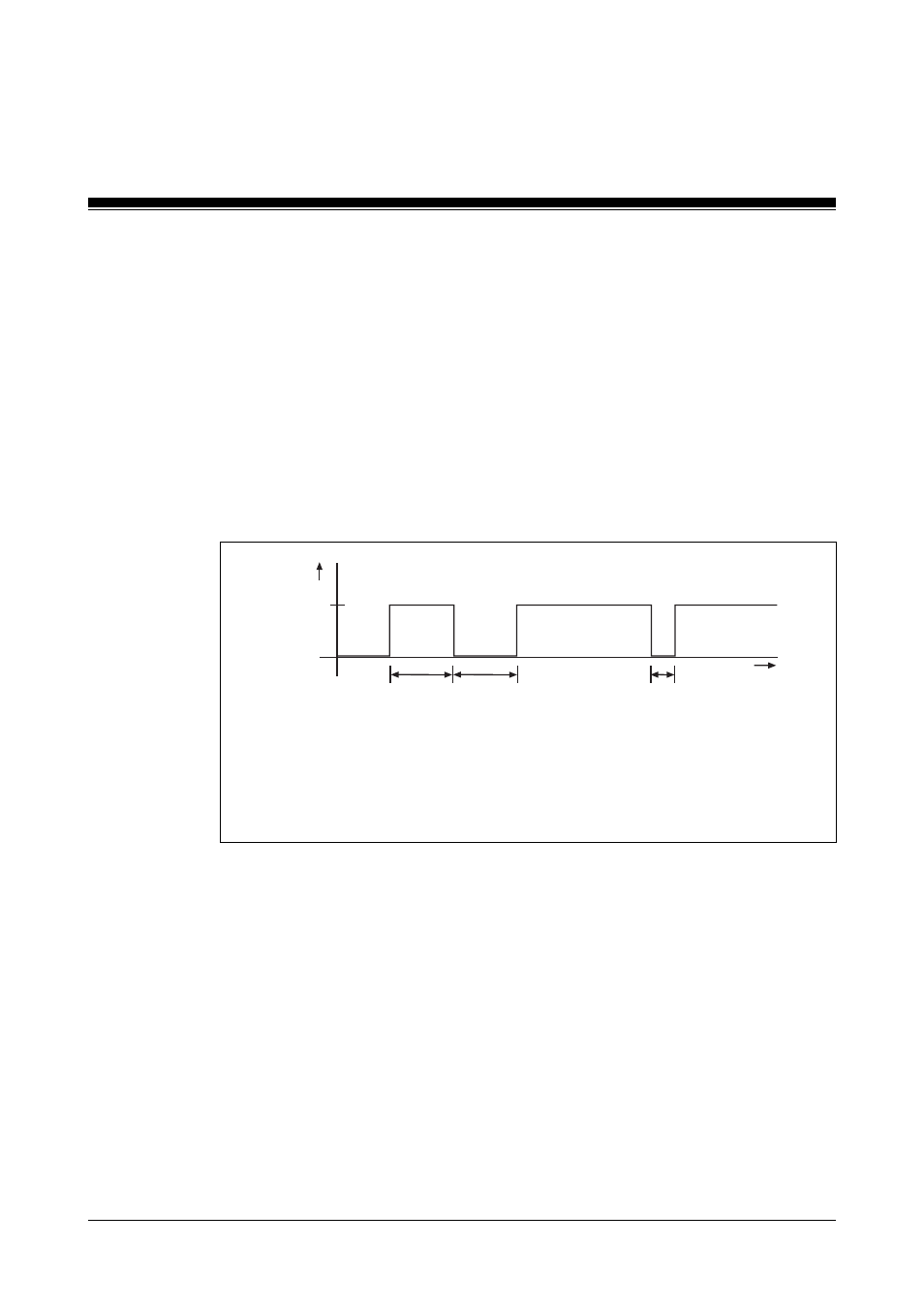Signal detection at the inputs, Signal change behaviour, Function description – Pilz PSS67 F 16DI SB-T User Manual
Page 18

Function Description
4 - 2
Operating Manual: PSS67 F 16DI SB-T
Signal detection at the inputs
To guarantee that a signal at an input (“0” signal or “1” signal) is detected, it
must be present for a certain time period. This period must be longer than
the event timeout configured in the PSS WIN-PRO system software. Once
a signal has been detected, a corresponding event telegram will be
triggered.
A signal (“0” signal or “1” signal) is ignored if it does not exceed the pulse
suppression time of 300 µs. In this case, no event telegram is triggered.
"1"-Signal
"0"-Signal
t
1
t
1
t
t
2
U
t
1
:
Pulse duration to guarantee signal detection for “1” signals or “0” signals
(
>
Event Timeout)
t
2
:
Max. pulse duration for pulse suppression with “1” signals or “0” signals
(300 µs)
Fig. 4-1: Signal detection at the inputs
Signal change behaviour
If a signal at an input changes, the module will send an event telegram.
The module must then wait for a confirmation telegram (ACK) from the
Master LD before it can send out a new event telegram.
If there is another signal change while the module is waiting for the
telegram, the module’s behaviour will depend on the configured signal
change behaviour.
